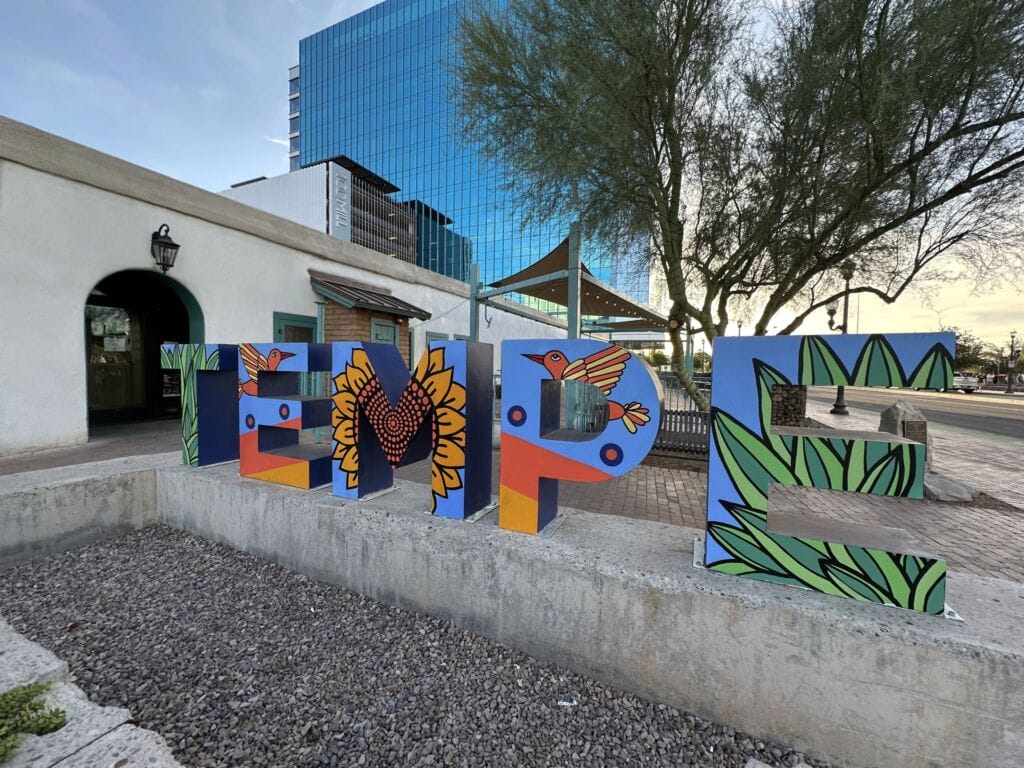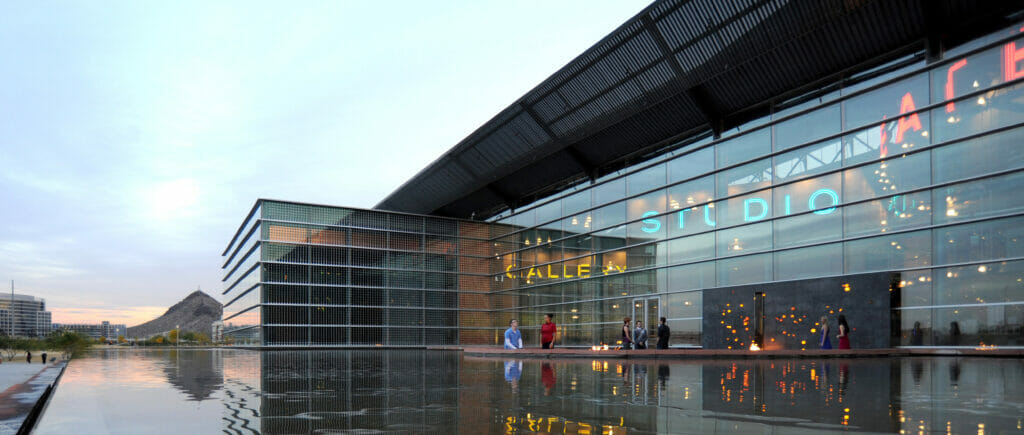
About Us
About the Tempe Tourism Office
Cheer at an Arizona State University basketball game. Cruise around Tempe Town Lake on a kayak or paddleboard. Go on a shopping spree at Arizona Mills, Tempe Marketplace or IKEA. See a Broadway show at the Frank Lloyd Wright-designed ASU Gammage. Take in an art exhibition or performance at Tempe Center for the Arts or ASU Art Museum. Celebrate with a night on the town in Downtown Tempe. Go for a hike along a cactus-lined Sonoran Desert trail, dine on one of the many outdoor patios or simply lounge by the pool. Tempe is known for year-round events, so there’s always something happening here. And if sunshine is what you’re looking for, you’ll find it in Tempe. Let the Tempe Tourism Office help you learn more about our favorite city.
Mission
To inspire collaboration that strengthens our city’s quality of life and champions Tempe’s distinction as an outstanding travel destination.
Vision
Tempe thrives as Arizona’s premier destination for energetic, inspiring and enterprising travel.
Core Values
Passion: We are committed and proud of the work we do.
- We believe in the power of travel
- We continuously reflect on our mission and vision
- We encourage an enjoyable and rewarding work environment
Collaboration: We are united in our efforts to support, serve and build our community.
- We empower connectivity through transparent communication and partnership
- We are able to adapt and thrive in a dynamic team environment
- We collectively accomplish goals with creativity, innovation and agility
Authentic: We encourage individuality and diversity.
- We embrace uniqueness: know yourself, be yourself
- We value that everyone has a seat and voice at the table
- We recognize individual strengths and experiences
Tempe Tourism Office Land Acknowledgement Statement
The Tempe Tourism Office acknowledges that present-day Tempe is the historic and ancestral homeland of Native peoples, including the O’Odham (known as Pima), Piipaash (known as the Maricopa) and their ancestors, who we often refer to as the area’s original inhabitants. We also recognize the continued connection between the Salt River Pima-Maricopa Indian Community, the Gila River Indian Community and the land today.
In January 2021, the Mayor and Council approved a resolution commemorating the historical and cultural significance of the historic homelands in Tempe of the O’Odham, Piipaash and their ancestors. Read the resolution here. Similarly, the City of Tempe’s Land Acknowledgement Statement can be viewed here.

Contact Us
We’re here to help you plan your trip to Tempe. We have the inside scoop on hotels, attractions, events and more!
Learn More

